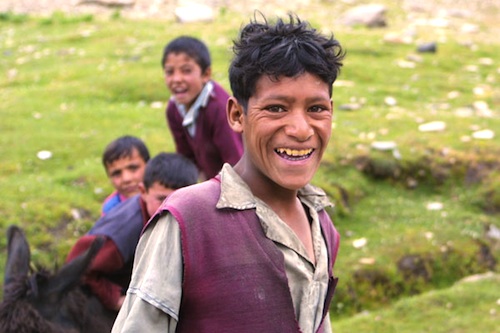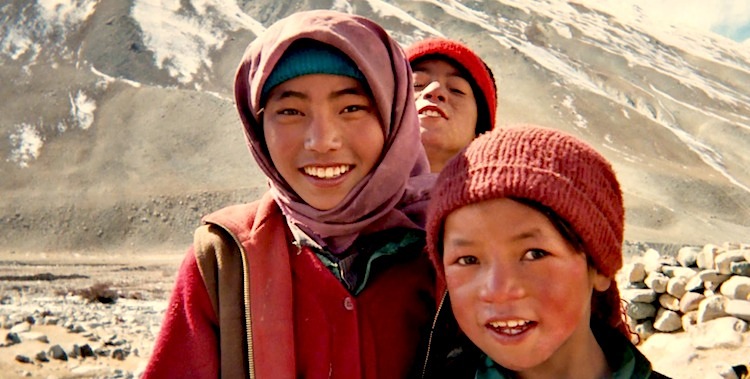By Joe Bendel. The geography of Zanskar is decidedly harsh. While physically cold and arid, its position as a minority Buddhist enclave amid the tinder box of Kashmir is politically and culturally precarious. As a result, the needs of Zanskaris, particularly the education of their children, have not exactly been a high priority for either the national or local Indian authorities. Concerned with the nearly uniform illiteracy in Zanskar and the potential extinction of the Tibetan language, two monks led a group of Zanskari children to distant Manali, where a place in school and hope for a better life awaited them. Their arduous trek is documented in Frederick Marx’s Journey from Zanskar: a Monk’s Vow to Children (trailer here), which opened in New York this past Friday.
In the Tibetan Buddhist tradition, “Geshe” is an honorific bestowed on the completion of an advanced course of academic studies. As a Geshe originally from Zanskar, Geshe Lobsang Yonten keenly understood the value education and was alarmed by the lack of opportunities for children in his native region. Identifying Zanskar’s most promising children, the Geshe and his order arrange their enrollment at a school in Manali, where they will be taught both Tibetan and western academic curriculum. However, getting there will be a trick.

The eastern route is considered the most dangerous, due to the Muslim extremists who frequently murder Buddhists on the roads near Pakistan. There is little risk of such violence on the western route, but it leaves them more beholden to the elements. As for the direct route, it would take the monks, their young charges, and the accompanying parents, over a series of mountains passes by foot in frigid temperatures and altitudes reaching 17,000 feet. They chose the latter (and according to Marx during Rubin Museum of Art Q&A, it almost killed him).
The most striking aspect of Journey is the charisma of its subjects. Though the trip wears on the Geshe as well, he exudes indomitable charm and remarkable optimism throughout their odyssey. Likewise, the kids all seem to have smiles that could light up any room. Their spirit is best represented by a scene late in the picture, when one boy tasting his first sample of nuts ever, reaches over to share with Marx.
Journey might be somewhat manipulative, but it absolutely works. Audiences will definitely root for these kids and feel for their parents, who essentially must give them up for years in order for them to have better opportunities in life. Marx, best known as one of the filmmakers of Hoop Dreams, also deserves credit as a documentarian (along with primary cinematographer Nick Sherman), both for enduring the elements and exhaustion for the sake of the film, as well as for scrupulously keeping himself out of the picture, instead focusing exclusively on the monks and the children.
Watching Journey, it is clear these are good-hearted kids who deserve a better life. Viewers who want to help the monks’ efforts to build a school for them in Zanskar should visit www.SaveZanskar.com. A genuinely moving, highly recommended film, Journey began its regular New York theatrical engagement last Friday at the Quad Cinema.
Posted on September 26th, 2011 at 2:22pm.
